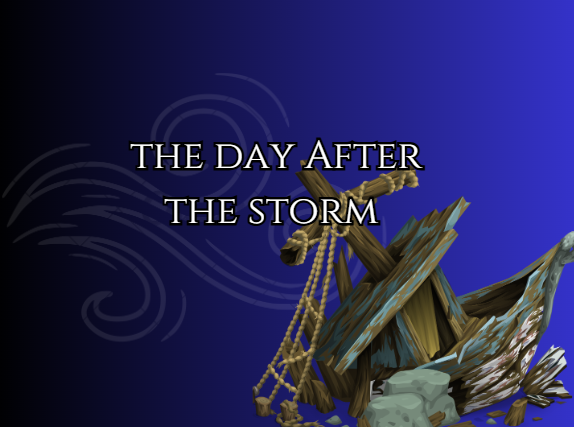In the previous post, we explored how the Butterfly Effect may have a counterpart in the realm of human cause and effect.
To recap: the Butterfly Effect holds that within certain systems, large events can result from dramatically smaller prior events; in principle, the formation of a hurricane could depend on a prior event every bit as microscopic as a butterfly flapping its wings.
Following the same logic, the Dictator's Butterfly suggested that a similar sensitivity exists in the world of human causation, with trivial and chance events in the lives of insignificant individuals proving decisive in bringing about the most impactful historical events and social changes. The lives of dictators were shown to be one way by which this happens.
In today’s post, we will consider whether acknowledging the peculiar role of such microscopic events in the unfolding of the past produces any problems for the discipline of history.
Lost in the Storm
One part of the discipline of history is trying to figure out what most likely occurred in the past. In this respect, the historian’s main challenge is finding reliable sources. When lots of sources exist for a particular period in history (e.g., the 20th century), historians can easily pick out the microscopic chance events and wrestle with their significance.
Critical Concept: Reliable Source
A source that conveys genuine and accurate information. To determine if a source is reliable, we need to address its nature (in other words the type of thing it is), its origin (who made it), as well as the purpose of the source, not to mention the sources intended audience.
But as we go back in time to periods in which writing and record keeping is rare, historians are only able to find evidence of the big events (e.g., a war, a king’s reign, a famine, etc). This means historians (as they will be the first to admit) can at times only build a partial picture of the past.
This partial picture isn’t so much an issue when lots of what’s missed traditionally counts as the humdrum interactions of everyday life. But the challenge of the Dictator’s Butterfly lies in the claim that many events which would be reasonably deemed as insignificant in the moment turn out (with hindsight) to be highly significant. However, having hindsight requires detailed historical records of everyday social life; something we lack at least until literacy becomes widespread.
As Unpredictable as a Storm?
Coming at the challenge of the Dictator’s Butterfly from another angle, historians aren’t just interested in the ‘what’ (happened) but also the ‘why.’ For example, why do new ways of arranging society emerge when they do?
When it comes to the big questions, historians often invoke explanatory big ideas, often referred to as ‘factors.'
Over larger times scales, geological and ecological factors such as access to certain raw materials or exposure to certain diseases are seen as major factors of change (see Jared Diamond). At more narrow timescales, such as explaining the outbreak of WW1 alliance systems, militarism and nationalism are typically invoked.
Critical Concept: Geological factors
Geological factors are aspects of the natural environment which shape the development of human history, including landscapes, natural disasters, and the types of plants, animals, and organisms, humans find themselves surrounded by.
Exploring shorter slices of history, often magnifies the importance of so called 'great men' - with factors like intelligence, pride and greed providing powerful explanations for the change and continuity that we witness over time.
What geological/ecological factors (like exposure to disease and access to raw materials) share with more traditionally deemed historical factors (like an inventor’s intelligence or a king’s pride), is that they deploy concepts that describe general phenomena. Such factors pick out an observable pattern and are exemplified in many scenarios in the real world.
It is said that history rarely repeats but often rhymes. if so, the above factors could be said to represent the similar sounds shared by two words which make up a rhyming couplet. In other words, these factors can appear in a range of contexts with some similar effects; an economic collapse, no matter the time or place, will generally produce civil unrest.
Much of the appeal of historical investigation is that in discussing such factors we explain the past and learn lessons for the future - if economic collapse often produces authoritarian regimes, we ought to be incredibly careful in how we approach the economy.
The problem with acknowledging the potency of microscopic random events is that they in contrast to the above factors a aberrant, one offs - completely idiosyncratic by nature. If some similar chance event were to happen again, it would likely have completely different consequences. We do not worry about whether acquiring a new less silly surname will result in our ancestors becoming genocidal dictators.
And so, the argument goes: by acknowledging histories own equivalent of the Butterfly Effect our state of knowledge is left somewhat worse for wear: not only are we more profoundly unaware of what unseen factors have shaped the dark recesses of human history, but even were we to know, it would be entirely useless knowledge going forward. such random events exist in such a complex network that on every roll of the dice they produce different outcomes.
Next
in the next post we will push back against the above-mentioned ideas. We will show that such sliding door moments are not as profound as they appear, nor do they pose a significant threat to historical explanation and knowledge.


